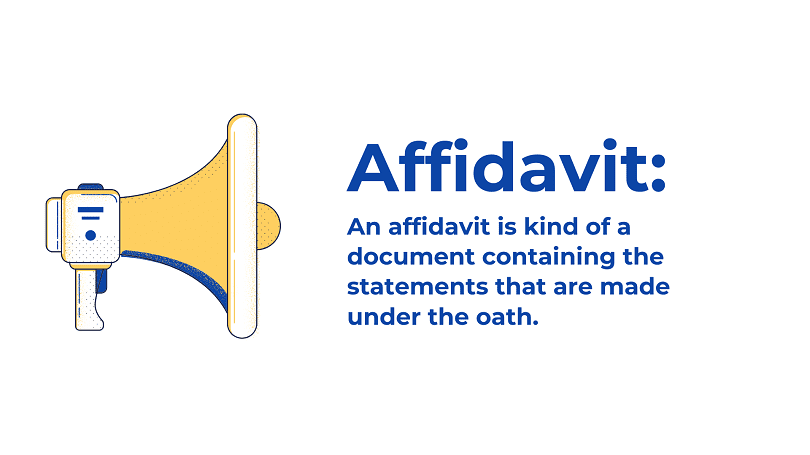Affidavit Document Letter: Affidavit Definition, Understanding Affidavits
How to Write an Affidavit Letter?

An affidavit is kind of a document containing the statements that are made under the oath.
By ‘under oath’ it is meant that whatever facts are written in the Affidavit, are formal promises that are confirmed by the court or some other institution, for example, a bank. The confirming authority confirms that whatever is written in the affidavit is true and is based on some personal belief or knowledge.
Additionally, the affidavit is also recognized as:
- Statement Under Pledge
- Sworn Statement
- Notarized Statement
Commonly, the affidavit is mostly used by the affiant. An Affiant is a person who submits his statements with the affidavit to the following.
- For the verification purpose of something that is known as true for example, for verification of identity.
- To present the formal evidence in court for a case. For example, providing evidence for a vehicle accident cases.
Statutory Declaration
This document is very similar to the Affidavit in a way that gives permission to the declarant i.e a person who puts the signature on Statutory Declaration, to give in the facts he knows to be very true. However, this must be kept in mind that the Statutory Declaration is most commonly used to provide the facts to government agencies, etc. Whereas, the Affidavit is mostly used in courts.
Moreover, it is recognized by the following names also
- Stat Dec
- Statutory Declaration file
- Affirmation
- Declaration
Affidavit purpose
Affidavits can be used for the following purposes
- For notifying the third party about the death of someone until the receiving of a Death certificate.
- To confirm the place of residence where you live.
- To certify that your name is changed and is different from the one written on the birth certificate.
- For the verification of identity for an event where there is compromisation of personal information.
- To record the aspects of the finance of business or yourself.
- For the establishment of property ownership of some deceased kin’s assets.
- To prove that third party or you have served some other person with a document such as a divorce document.
Affidavit creation
In order to create the Affidavit, you have to write the following information
- Name, signature, and address
- Evidence you need to submit or the facts you request to verify.
- Court information where the document is going to be submitted.
- Signatures from the commissioner or notary public who had witnessed your facts in the document.
Documents attachment to Affidavit
You can attach the documents, photographs, statements, or anything else that will help in proving the information within the Affidavit. Make sure that these things will be attached at the document end and not in the beginning.
However, the official method of attaching the documents include labeling them for reference. For example, Exhibit A, etc.
Signing the Affidavit
A person with a sound mind, meaning that he must be able to understand whatever is written in the Affidavit clearly is required. He/she must know everything about oath-taking and must be aware of all the written facts in Affidavit.
Commonly, the Affidavit can be signed by the person who’s an adult of more than 18 years old. However, it is to consider that there’s no age requirement as in some cases the minor can also sign the Affidavit. For example, when the evidence is needed to be submitted in family proceedings.
Lying penalty
It is very necessary that you write true and accurate information in the Affidavit. This is because the document is needed to present in court and courts don’t tolerate lies.
However, false information in the Affidavit can lead to legal punishment. The charge severity usually depends upon the jurisdiction and is mostly considered perjury. Anyhow, the most possible penalty for writing a piece of false information is serving jail for some time.


